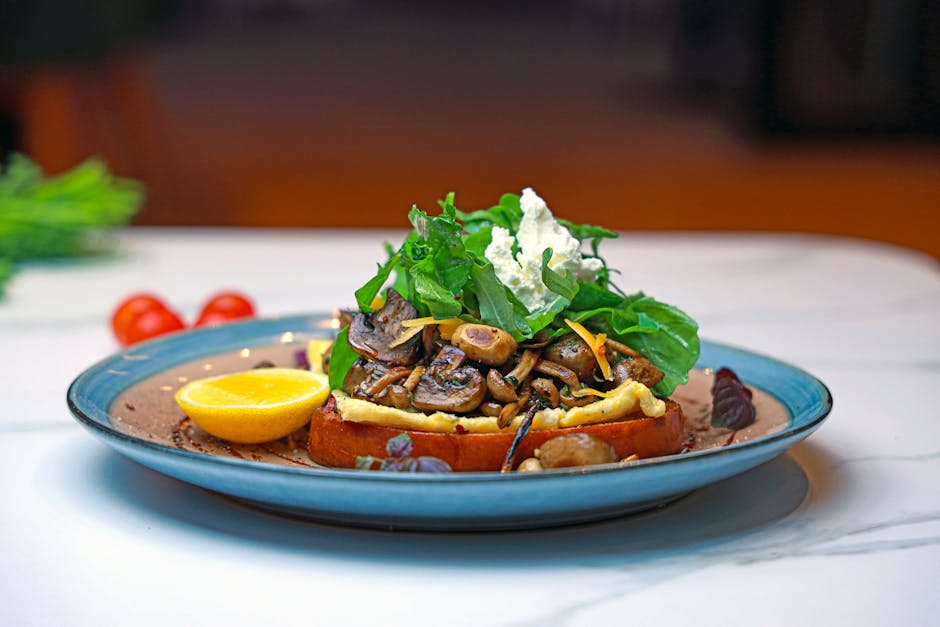
How Much Loose Leaf Tea Per Quart? Get the Perfect Brew!
Brewing loose leaf tea is an art that has been perfected over centuries. Unlike the convenience of tea bags, loose leaf tea offers a richer and more complex flavor profile. The process may seem daunting at first, but with the right knowledge and tools, anyone can master the perfect brew. Whether you are a seasoned tea enthusiast or a newcomer, understanding the basics of loose leaf tea can significantly enhance your tea-drinking experience.
One of the primary questions that arise in this journey is how much loose leaf tea per quart should be used to achieve the perfect flavor. This article aims to guide you through the essential aspects of brewing loose leaf tea, from choosing the right type of tea to understanding the correct measurements and brewing times.
At Darkness of the Twilightmoon, we are passionate about providing you with the finest gourmet coffee and loose leaf tea. Visit us today to explore your own magic of the perfect brew at Darkness of the Twilightmoon.
Understanding Tea to Water Ratio

Achieving the perfect brew starts with understanding the correct tea to water ratio. This ratio can significantly impact the flavor, strength, and overall quality of your tea. For loose leaf tea, a general guideline is to use about one teaspoon of tea leaves per 8-ounce cup of water. However, when scaling up to a quart (32 ounces), the measurement changes slightly to accommodate the larger volume.
For a quart of tea, you would typically use about four teaspoons of loose leaf tea. This ratio can vary depending on the type of tea you are brewing. For instance, stronger teas like black tea or oolong may require slightly less tea, while more delicate teas like green or white tea may need a bit more to fully develop their flavors.
To get the most out of your tea leaves, it's essential to consider not only the quantity but also the quality. High-quality loose leaf tea tends to have larger, more intact leaves that unfurl as they steep, releasing a more robust flavor. In contrast, lower-quality teas may consist of smaller, broken leaves that can become over-extracted and bitter if too much is used.
Additionally, personal preference plays a crucial role in determining the ideal tea to water ratio. Some people prefer a stronger brew, while others might enjoy a lighter, more subtle flavor. It can be helpful to experiment with different ratios to find the perfect balance that suits your taste.
How Much Loose Leaf Tea Per Quart

Determining how much loose leaf tea per quart is essential for crafting the perfect brew. While the standard guideline is to use one teaspoon of loose leaf tea per 8-ounce cup of water, brewing a quart (32 ounces) requires a bit more precision to ensure optimal flavor and consistency.
For a quart of tea, the general recommendation is to use about four to six teaspoons of loose leaf tea. This range allows for flexibility depending on the type of tea and your personal taste preferences. For example:
- Black Tea: Typically, four teaspoons per quart provide a rich and robust flavor.
- Green Tea: Five teaspoons per quart ensure a balanced and smooth taste.
- Herbal Tea: Six teaspoons per quart may be required to bring out the full depth of flavors.
When measuring loose leaf tea, it's important to consider the size and shape of the leaves. Larger leaves, such as those found in oolong or white tea, may take up more space in the teaspoon, so slightly adjusting the quantity might be necessary to avoid a weak brew.
Additionally, the brewing time and water temperature can also affect the final taste. Steeping for too long or using water that's too hot can lead to a bitter or astringent flavor, while under-steeping or using cooler water might result in a bland cup. Balancing the right amount of tea with appropriate brewing conditions ensures that every quart you make is just right.
Experimenting with different quantities and brewing techniques can help you discover the perfect combination for your favorite teas. Keep notes on what works best for you, and enjoy the journey of finding your ideal brew!
Factors Influencing Tea Measurements

When determining the right amount of loose leaf tea per quart, several factors come into play. Understanding these variables can help you achieve the perfect brew every time.
Tea Type: Different types of tea require different measurements. For instance, dense black teas and fine green teas may need less tea per quart compared to lighter, more voluminous white or herbal teas. The density and size of the tea leaves significantly influence how much you should use.
Tea Quality: High-quality loose leaf teas often have a more robust flavor, meaning you might need less tea to achieve the desired taste. Conversely, lower-quality teas may require a bit more to reach the same flavor intensity.
Personal Taste Preferences: Everyone's palate is different. Some may prefer a stronger, more robust tea, while others might favor a lighter, more delicate brew. Adjusting the quantity of loose leaf tea based on your taste preferences is key to enjoying your tea.
Leaf Size and Shape: The size and shape of the tea leaves can also impact measurements. Larger, whole leaves often take up more space and may require a different measurement approach compared to smaller, broken leaves or tea dust.
Brewing Method: The method you use to brew your tea can affect the amount needed. For example, cold brewing generally requires more tea leaves compared to traditional hot brewing to achieve the same flavor strength. Similarly, using a tea infuser or teapot might influence the quantity needed based on how the leaves expand during brewing.
Water Quality: The quality of the water used can also play a role. Hard water with high mineral content can sometimes mute the flavors of the tea, requiring a bit more tea to compensate. Alternatively, using filtered or soft water can enhance the tea's natural flavors, potentially reducing the amount needed.
Considering these factors when measuring your loose leaf tea can help you achieve a consistently delightful brew. Don’t hesitate to experiment and adjust based on your unique preferences and the specific characteristics of the tea you are using. This way, each cup or quart of tea reflects your personal taste and enjoys the full potential of the ingredients.
Brewing Tips for Perfect Flavor

Brewing loose leaf tea is an art that can be perfected with a few key tips. Understanding how to extract the best flavor from your tea leaves can elevate your tea-drinking experience.
Water Temperature: The temperature of the water is crucial to unlocking the full flavor profile of your tea. For instance, green and white teas are best brewed with water that is between 160-185°F (70-85°C) to avoid bitterness. Black and oolong teas, on the other hand, can handle higher temperatures, usually around 200°F (93°C).
Steeping Time: Over-steeping or under-steeping can ruin the flavor of your tea. Green teas generally require 2-3 minutes, while black teas can steep for 3-5 minutes. Herbal teas often need a longer steeping time, around 5-7 minutes, to release their full flavors. Always refer to the specific recommendations for the type of tea you are brewing.
Proper Measurement: Using the right amount of tea is essential. A general guideline is to use 1 teaspoon of loose leaf tea per 8-ounce cup of water. For a quart, this translates to roughly 4 teaspoons. However, this can vary depending on the tea type and personal preference, as discussed in the previous section.
Quality of Water: The water you use can significantly impact the taste of your tea. Filtered or spring water is often ideal as it doesn’t contain the chlorine or minerals that tap water might, which can alter the tea's flavor. Avoid distilled water, as it lacks the minerals that help bring out the tea's nuances.
Use of Fresh Leaves: The freshness of your tea leaves matters. Loose leaf tea should be stored in an airtight container, away from light, heat, and moisture to maintain its freshness. Fresh leaves will always yield a better flavor compared to old or improperly stored leaves.
Pre-warm Your Teapot: Pre-warming your teapot or cup can help maintain the optimal temperature of your tea as it brews. Simply rinse the teapot or cup with hot water before adding your tea leaves and brewing water.
By following these brewing tips, you can ensure that each cup of tea you make is full of rich, vibrant flavors. Whether you are a seasoned tea aficionado or new to the world of loose leaf tea, these tips can help you brew the perfect cup every time.
Conclusion and Final Thoughts
Mastering the art of brewing loose leaf tea is a delightful journey that enriches your daily routine with exquisite flavors and aromas. By understanding the importance of the correct tea-to-water ratio, optimal brewing times, and appropriate water temperatures, you can unlock the full potential of each unique tea variety. Whether you prefer the delicate notes of a white tea or the robust character of a black tea, these techniques ensure your brew is always perfect.
Moreover, investing in high-quality loose leaf tea and proper storage containers can significantly enhance your tea-drinking experience. Remember, the journey to the perfect cup of tea is as much about the process as it is about the end result. Take the time to experiment with different teas, brewing methods, and accessories to find what works best for you.
At Darkness of the Twilightmoon, we are passionate about providing you with the finest gourmet coffee, loose leaf tea, and unique coffee-quoted merchandise to elevate your brewing experience. Visit us today to explore your own magic of the perfect brew at Darkness of the Twilightmoon. Whether you're a seasoned connoisseur or just starting your journey, our curated selection is designed to cater to all your needs.
Embrace the art of tea brewing, and let each cup you make be a testament to your skill and dedication. Cheers to many perfect cups ahead!